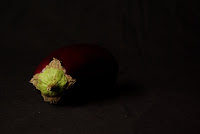
Set 1 Lighting via a window on the subject’s right hand side
Shooting at 1/125, 400 ISO, F4.5, WHITEBALANCE

Set 2 Lighting via a window on the subject’s right hand side
Shooting at 1/125, 400 ISO, F4.5, TUNGSTEN

Set 3 Lighting via a window on the subject’s right hand side
Shooting at 1/125, 800 ISO, F5.6, TUNGSTAN (Incandescent)

Set 4 Lighting via a window on the subject’s right hand side with a reflector on the subject’s right (photographer’s left hand side)
Shooting at 1/125, 800 ISO, F5.6, WHITEBALANCE (Daylight)


Set 5 Lighting via a window behind the subject using reflectors as shown below
Shooting at 1/125, 800 ISO, F5.6, WHITEBALANCE (Daylight)

Set 6 Lighting via a window behind the subject (No reflectors)
Shooting at 1/125, 800 ISO, F5.6, WHITEBALANCE (Daylight)

Set 7 Lighting via a window Above the subject
Shooting at 1/125, 800 ISO, F5.6, WHITEBALANCE (Daylight) Camera pointing down onto the subject

Set 8 Lighting via a window Above the subject
Shooting at 1/125, 800 ISO, F5.6, WHITEBALANCE (Daylight) Camera pointing straight at the subject’s face

Set 9 Lighting via a window Above the subject
Shooting at 1/125, 800 ISO, F5.6, SHADEY Camera pointing down on the subject’s face

Set 10 Lighting via a window Above the subject
Shooting at 1/125, 800 ISO, F5.6, CLOUDY Camera pointing down on the subject’s face

Set 11 Lighting using a 5500K Fluorescent daylight tube on the right hand side of the subject (photographer’s left)
Shooting at 1/125, 800 ISO, F5.6, TUNGSTEN

Set 12 Lighting using a 5500K Fluorescent daylight tube on the right hand side of the subject (photographer’s left)
Shooting at 1/125, 800 ISO, F5.6, SHADEY

Set 13 Lighting using a 5500K Fluorescent daylight tube on the right hand side of the subject (photographer’s left) Shooting at 1/125, 800 ISO, F5.6, CLOUDY

Set 14 Lighting using a 5500K Fluorescent daylight tube under the subject’s face
Shooting at 1/125, 800 ISO, F5.6, CLOUDY































 Whilst on location i took many pictures and returned in the evening to to get some shoots of the sunset but u
Whilst on location i took many pictures and returned in the evening to to get some shoots of the sunset but u